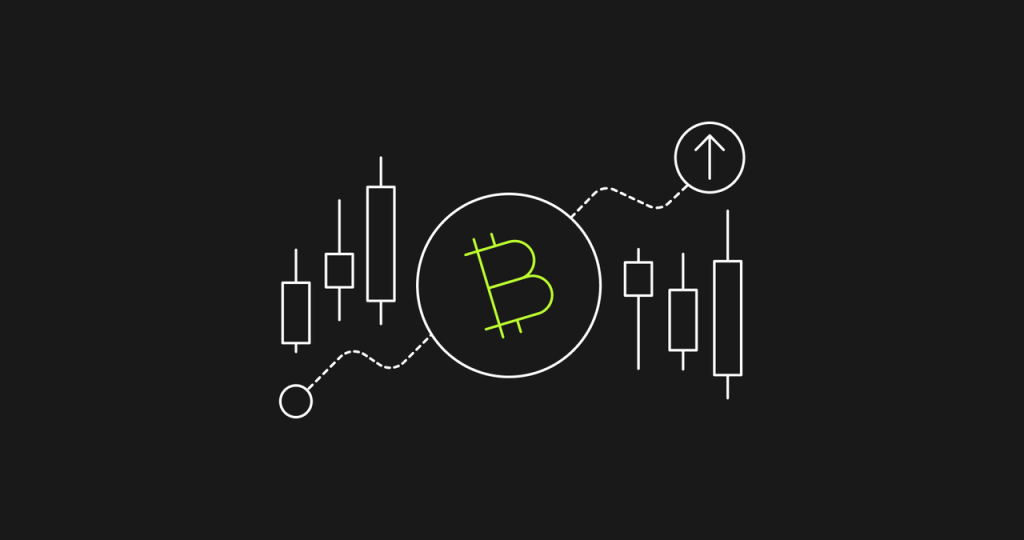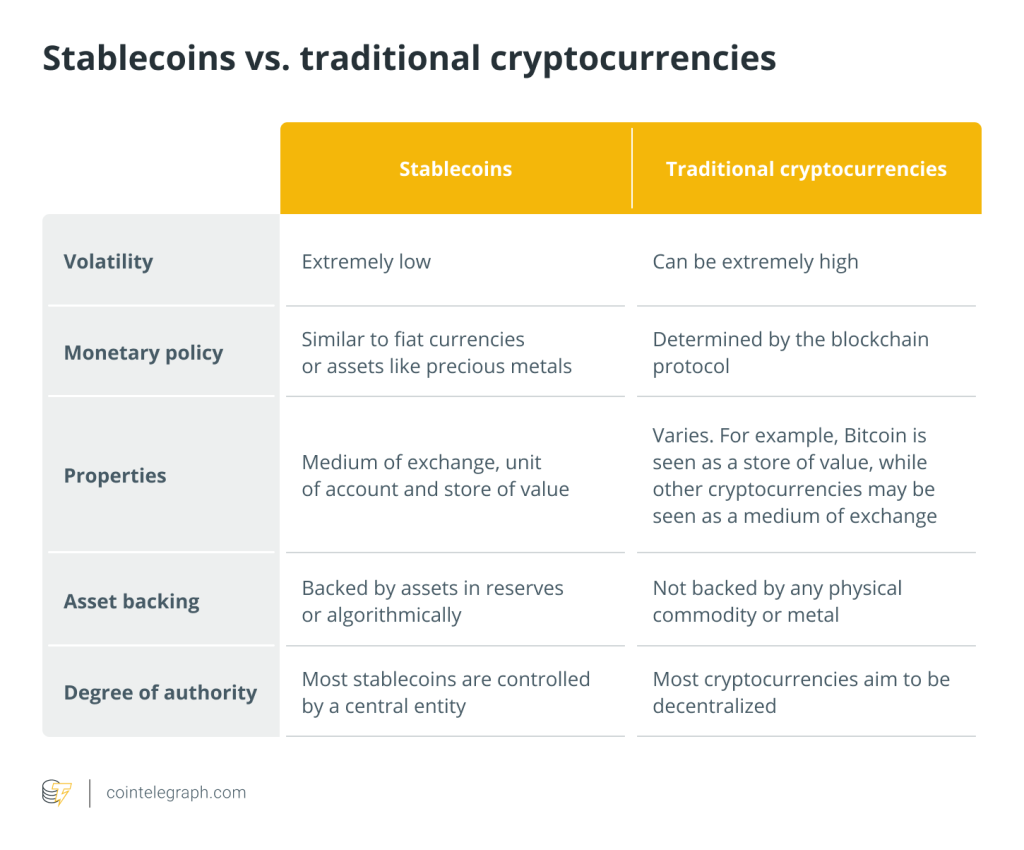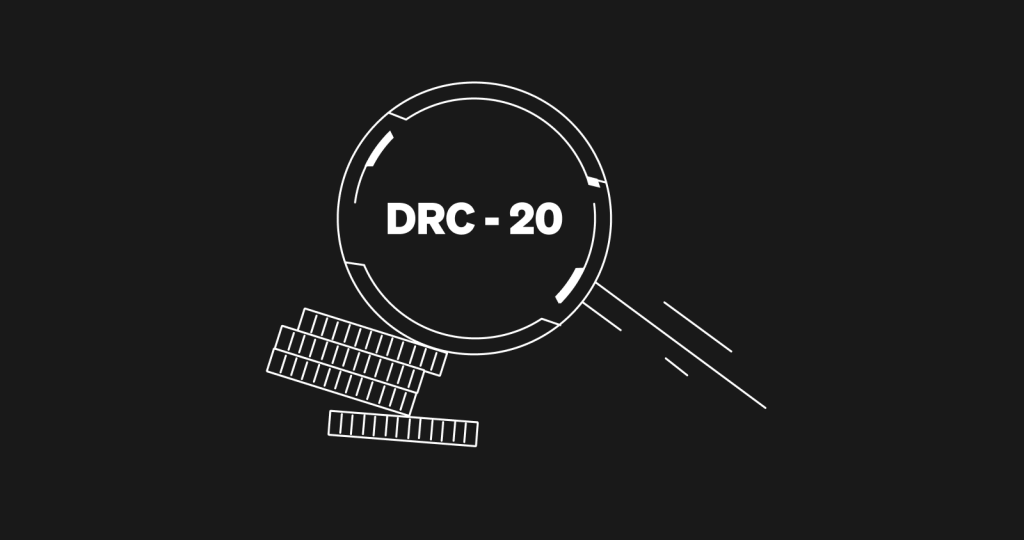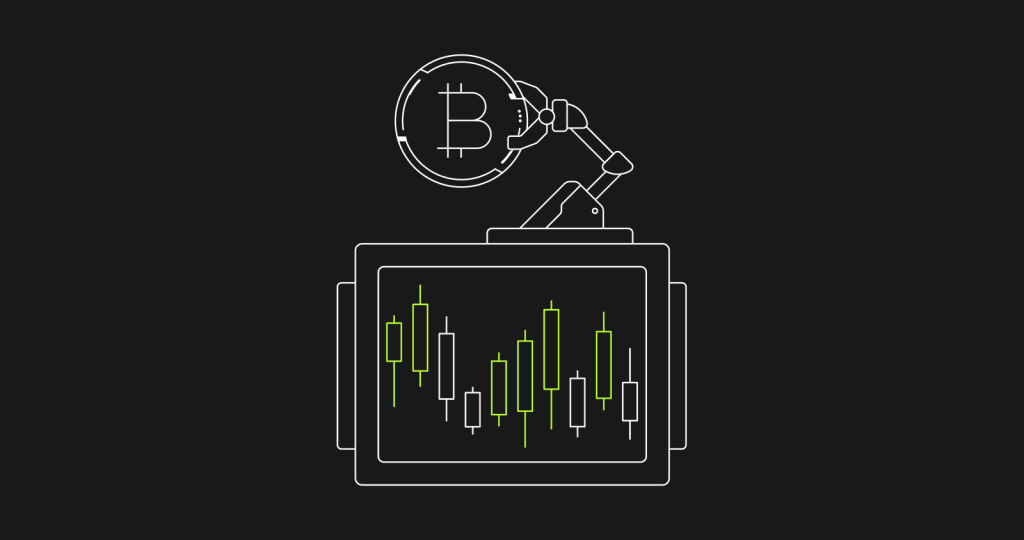A beginner's guide on algorithmic stablecoins


What is an algorithmic stablecoin?
Stablecoins are digital currencies that are tied to the U.S. dollar and function on the blockchain. Because of the lower intermediation costs associated with functioning on the blockchain, they are used as vehicle currencies for trading crypto assets. Capital efficiency, decentralization and peg stability are the three objectives of stablecoin designs. Let’s understand if the existing stablecoins meet these goals.
The most frequent type of stablecoin are centralized stablecoins, which are led by Tether and incorporate fewer liquid assets and commercial paper on its balance sheet. MakerDAO's DAI is in charge of decentralized (over-collateralized) stablecoins. Individuals receive DAI tokens by depositing cryptocurrency collateral, typically, Ether (ETH) in over-collateralized positions. However, they are less capital-efficient than their centralized counterparts while being decentralized.

The third category, led by TerraUSD, is algorithmic stablecoins, which are often under-collateralized. An algorithmic stablecoin is a cryptocurrency governed by algorithms (i.e., smart contracts) to dynamically reduce the price volatility of a specific asset, such as the U.S. dollar.
Cosmos-based protocol called Terra powers a set of algorithmic stablecoins that use the coin LUNA to keep their pegs. While TerraUSD follows a more capital-efficient design, it comes with the disadvantage of trading at a significant discount and being vulnerable to speculative attacks.
Given these cons, why do we need algorithmic stablecoins? Stablecoins based on algorithms rely on transparent and auditable code, which increases the chances of gaining confidence. However, understanding the many types of algorithmic stablecoins, the criteria that determine their performance and the risks that come with them will help you unlock their real potential (more on this later).
This article will discuss the role, types and stability of algorithmic stablecoins as well as answer the question if they are a safe investment.
How does an algorithmic stablecoin work?
A “two-coin” system is a typical algorithmic stablecoin structure in which one coin is used to “absorb” market volatility, and the other strives to keep the peg. This former token is commonly referred to as a balancer or share token, and it is frequently traded on secondary decentralized exchanges (DeXs) such as Uniswap (UNI). At first, Terra relied solely on this two-coin arrangement but has lately incorporated Bitcoin (BTC) reserves as a backstop to its mathematical approach.
Let's take the example of Terra's network to understand a two-coin system in the algorithmic stablecoin ecosystem. The Terra blockchain system contains two tokens: TerraUSD, a stablecoin, and Luna, a so-called governance token. The interaction between the two is intended to keep TerraUSD's dollar value steady.
If the stablecoin's price climbs over $1 due to investor demand, a Luna holder can exchange $1 of Luna for that coin, profiting from the higher price. On the contrary, traders can benefit by exchanging it for $1 worth of Luna when the coin falls in value. This lowers the supply and raises the price.
Therefore, the value of an algorithmic stablecoin is derived purely from what the European Central Bank's crypto-asset task force refers to as “the expectation of its future market worth.”
To begin, algorithmic stablecoins require a level of demand support for the entire ecosystem to function. However, the entire system will fail if demand falls below a certain level.
Even history has shown that the base or floor levels of financial product support are not guaranteed, particularly during a crisis. For instance, after the 1:1 USD pegged token went significantly below its intended $1 value in April 2021, Fei was down 80% from its bullish buying price.
Second, to maintain a so-called “stable” ecosystem, algorithmic stablecoins rely on independent individuals to undertake price stabilizing arbitrage to earn market incentives. Nonetheless, depending on separate, market-driven actors to execute price-stabilizing discretionary arbitrage without legal obligations is equally risky.
Types of algorithmic stablecoins
The three key categories of algorithmic stablecoins are discussed in the below sections.
Rebasing algorithmic stablecoins
Rebase-style stablecoins handle price-elastic ERC-20 tokens, i.e., a stablecoin's total supply is not fixed and is modified adaptively regularly. Instead, the correction is made automatically using the rebase process, which gradually stabilizes the price of a target stablecoin towards a fixed peg, such as $1.
The Ampleforth protocol has a feature called rebasing that changes the token supply. This means that the number of AMPL tokens in your wallet will vary based on the weighted average of the token price over that time every 24 hours.
Seigniorage algorithmic stablecoins
For algorithmic stablecoins, the seigniorage share model generally consists of two forms of cryptocurrencies: stablecoin (coins) and seigniorage ownership (shares). When the price of a currency exceeds the intended peg, shares are utilized to increase the supply of coins.
Seigniorage-style stablecoins, in addition to these two cryptocurrencies, typically issue a redeemable bond as an incentive for buyers when the price falls below the peg. Basis Cash is an example of a seigniorage-style algorithmic stablecoin project consisting of three cryptocurrencies, as discussed below.

The overall goal of the Basis Cash protocol is to keep the price of BAC stable by adjusting the supply. The system works like this: When basis cash rises over its $1 peg, the protocol mints new tokens and distributes them to BAS holders. This adds to the selling pressure, bringing the price down.
When Basis Cash falls below its $1 peg, the system encourages users to burn their tokens in exchange for bond tokens that are given 1:1. Once the token's price peg rises above $1, users can exchange their bond tokens for Basis Cash tokens.
Fractional algorithmic stablecoins
Fractional-algorithmic stablecoins combine the features of fully-algorithmic and fully collateralized stablecoins. These stablecoins avoid over-collateralization and have fewer custodial risks. In contrast to solely algorithmic designs, it is aimed to enforce a somewhat tight peg with a higher level of stability.
Frax is the first stablecoin implementation to use the partial-collateral protocol that provides a two-token architecture, in which FRAX serves as a $1-pegged stablecoin and FXS as a governance token.
Pros and cons of algorithmic stablecoins
Financial product innovation isn't necessarily a good thing, and some innovations are purposefully engineered to be intrinsically unstable, and algorithmic stablecoins projects are among such inventive currencies.
However, due to a bewildering array of sophisticated securitization-driven derivatives, the global financial system nearly crashed in 2008. A similar meltdown happened in the crypto world due to the collapse of TerraUSD. So, how stable are algorithmic stablecoins? To find out, let’s explore the pros and cons of algorithmic stablecoins in the below sections.
Pros of algorithmic stablecoins
Algorithmic stablecoins are the true embodiment of decentralization, as the code defines the rules that regulate the underlying financial system, with no regulatory agencies keeping an eye on users' transactions. Additionally, the lack of a tangible asset requirement in algorithmic stablecoin eliminates the risk of user error.
Algorithmic stablecoins reintroduced seigniorage into the crypto ecosystem, i.e., assessing the profit or loss made on the production of a currency is possible in the decentralized world of digital assets.
Cons of algorithmic stablecoins
Stablecoins based on algorithms have inherently weak architecture. These uncollateralized digital assets, which use algorithms, financial engineering and market incentives to attempt to peg the price of a reference asset, are not stable at all and are always vulnerable to depegging risk.
Furthermore, there are three issues with algorithmic stablecoins. First, the ostensibly stable cryptocurrencies require a certain degree of demand to function correctly. The system collapses if demand falls below a specific level.
Second, stablecoins are vulnerable because they rely on self-motivated, independent investors who must be interested in profiting from the algorithm that keeps TerraUSD tied to the dollar. Finally, in times of crisis, traders acting on ambiguous information and uncertainty may cause this sort of stablecoin to lose value. It may also trigger a herd mentality, resulting in selling the underlying stablecoin, causing a massive price drop.
For instance, Terra stablecoin (UST) uses a two-token seigniorage scheme to stabilize the prices of Terra and Luna. Users can create $1 worth of TerraUSD stablecoins by burning $1 of Luna, which is the Terra blockchain's native token. Luna tokens are used for staking tokens in governance votes, paying fees for confirming blockchain transactions and generating yields on DeFi lending protocols.
However, the collapse of TerraUSD became a significant algorithmic stablecoins controversy when UST lost its dollar peg. But what happened to UST and Luna? A massive depeg happened when UST's price fell below $1.
Attackers started dumping UST, whereas Luna Foundation Guard started buying UST and selling BTC to restore the peg. Consequently, because of the crypto crash, as the UST depegs even further, the price of Bitcoin falls. Due to the panic, people tried to sell UST on exchanges at ever-lower prices, creating new sell pressure on the currency, causing it to depeg even further.
To summarize, UST sell-off = more LUNA in circulation = lower LUNA price. As a result of the Terra ecosystem meltdown, lawmakers and officials across the world have called for algorithmic stablecoins regulation to protect the crypto market from another crash in the future.

Are algorithmic stablecoins safe?
The stablecoin market is unregulated; therefore, investing in stablecoins includes devaluation risk and may be prone to speculative attacks in case of under-collateralization. When the supply of stablecoins is connected to the value of the blockchain's governance token, the risk of devaluation is increased.
Therefore, before deciding to invest in stablecoins or any form of digital currency, it is imperative to conduct your own research and understand the fundamentals and technical signals of the token under consideration.
Moreover, to protect stablecoins like TerraUSD, they should be fully backed by stable collateral, ideally liquid US dollar reserves, or its blockchain counterpart in stablecoins. Another option is to use smart contracts to preserve over-collateralization. For example, the system will enforce stablecoin liquidation to maintain complete peg stability and collateralization in the case of the collateral to stablecoin ratio falling below a certain threshold.
Additionally, it is essential to understand that collateralization defines the stability of any stablecoin. This means that a lack of trust in the initiative, as well as any consequences on the underlying collateral, might harm the economy. A decrease in the value of the collateral lowers the mandatory value of the stablecoin, potentially leading to a huge attempt to redeem stablecoins. The consequences of this situation are identical to those of a classic bank run.
Knowing the interdependencies between the components is critical since a stablecoin initiative is a complicated interaction of individual elements. Single component flaws can reinforce one another, especially if the obligations and responsibilities are unclear. Furthermore, because there is no collateral to liquidate the stablecoin back, users risk losing their investments in the event of a crash. Hence, users must be mindful while investing in algorithmic stablecoin projects.






… [Trackback]
[…] Read More to that Topic: x.superex.com/academys/beginner/3747/ […]
… [Trackback]
[…] Find More Info here on that Topic: x.superex.com/academys/beginner/3747/ […]
… [Trackback]
[…] Here you will find 69117 more Information on that Topic: x.superex.com/academys/beginner/3747/ […]
… [Trackback]
[…] Read More on that Topic: x.superex.com/academys/beginner/3747/ […]
… [Trackback]
[…] Find More Information here on that Topic: x.superex.com/academys/beginner/3747/ […]
… [Trackback]
[…] Information on that Topic: x.superex.com/academys/beginner/3747/ […]
… [Trackback]
[…] There you will find 99286 additional Information on that Topic: x.superex.com/academys/beginner/3747/ […]
… [Trackback]
[…] Info on that Topic: x.superex.com/academys/beginner/3747/ […]
… [Trackback]
[…] Read More Information here on that Topic: x.superex.com/academys/beginner/3747/ […]
… [Trackback]
[…] There you will find 59426 more Information on that Topic: x.superex.com/academys/beginner/3747/ […]
… [Trackback]
[…] Find More Information here to that Topic: x.superex.com/academys/beginner/3747/ […]
… [Trackback]
[…] Find More on that Topic: x.superex.com/academys/beginner/3747/ […]
… [Trackback]
[…] There you can find 69692 additional Information on that Topic: x.superex.com/academys/beginner/3747/ […]
… [Trackback]
[…] Find More to that Topic: x.superex.com/academys/beginner/3747/ […]
… [Trackback]
[…] Read More on that Topic: x.superex.com/academys/beginner/3747/ […]
… [Trackback]
[…] There you will find 45328 more Info to that Topic: x.superex.com/academys/beginner/3747/ […]
… [Trackback]
[…] Here you will find 59931 additional Info to that Topic: x.superex.com/academys/beginner/3747/ […]
… [Trackback]
[…] There you will find 52946 additional Info to that Topic: x.superex.com/academys/beginner/3747/ […]
… [Trackback]
[…] Find More to that Topic: x.superex.com/academys/beginner/3747/ […]
… [Trackback]
[…] Find More to that Topic: x.superex.com/academys/beginner/3747/ […]
… [Trackback]
[…] Read More to that Topic: x.superex.com/academys/beginner/3747/ […]
… [Trackback]
[…] Read More Information here on that Topic: x.superex.com/academys/beginner/3747/ […]